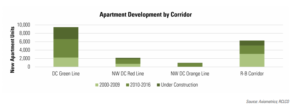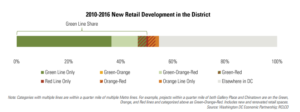Development Boom Along Metro’s Green Line
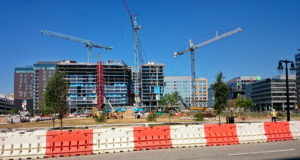 Construction in the Capitol Riverfront BID
Construction in the Capitol Riverfront BID
Image credit: Payton Chung
Despite Metro’s struggles over the past several years, development along the Green Line is continuing at a rapid pace. A recent report released by the Capitol Riverfront Business Improvement District outlines how the Green Line Corridor—Petworth to Navy Yard stations—has outperformed other Metro corridors in areas such as housing and retail. Metro corridors used for comparison in the report include the Red Line from Tenleytown to Union Station, the Orange Line from Foggy Bottom to Smithsonian, and the Rosslyn-Ballston corridor.
The report finds that, since 2000, 1 in every 4 new apartments have been built along the Green Line corridor. The Navy Yard station in particular has seen more apartment development than any other Green Line station. Between 2000 and 2016, the Navy Yard area added 2,300 new apartment units, which was twice as many units built at either the Shaw or U Street stations. Younger households are particularly drawn to the corridor, as nearly half of all households under the age of 35 have moved to the Green Line corridor since 2010. The report also find that new condo deliveries along the Green Line corridor see a premium of over 30% compared to resale pricing. The Navy Yard station also expects to add 640 new condo units by 2019.
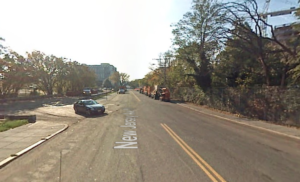 Looking south down New Jersey Ave. SE from I-695 in 2007
Looking south down New Jersey Ave. SE from I-695 in 2007
Image credit: Google StreetView
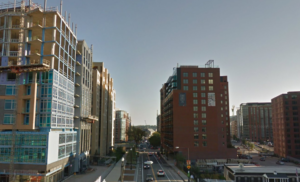 Looking south down New Jersey Ave. SE from I-695 in 2016
Looking south down New Jersey Ave. SE from I-695 in 2016
Image credit: Google Street View
Retail development along the Green Line is also booming. The report finds that 50% of the District’s retail development since 2010 has occurred along the Green Line. CityCenterDC in the East End represents 20% of the corridor’s retail development, while the Navy Yard area accounts for 22%.
The report also finds that between 2010 and 2016, the number of jobs located along the Green Line corridor grew by 50% with high-wage jobs contributing over half of this growth. Development activity along the corridor is expected to generate $3.66 billion in tax revenues for the District over the next 20 years.
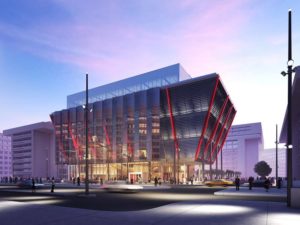 Future Spy Museum at L’Enfant Plaza
Future Spy Museum at L’Enfant Plaza
Image credit: The JBG Companies
Recently, development has begun to shift west to the Southwest quadrant, with over 2 million SF of office space, over 6,000 multifamily units, and over half a million SF of retail already under construction or soon to break ground in the Waterfront, L’Enfant Plaza, and Buzzard Point Districts near the L’Enfant Plaza and Waterfront stations. Most of this new development will be located in new “mega” mixed-use developments including Hoffman-Madison Waterfront’s 3.2 million SF project District Wharf along the Washington Channel, JBG’s 1.2 million SF L’Enfant Plaza redevelopment, the new DC United Stadium and the 2.1 million SF Waterfront Station mixed-use development from Forest City, Vornado/Charles E. Smith, and Bresler & Reiner.
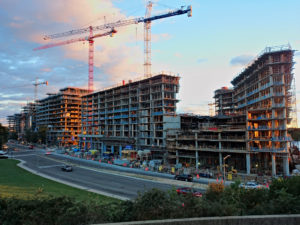 Construction at District Wharf in October 2016
Construction at District Wharf in October 2016
Image credit: Payton Chung
The Green Line corridor is a strong source of economic growth for the Washington region, and continues to exemplify the value of transit-oriented development in fueling the regional economy.
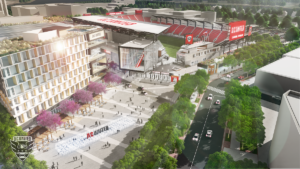 Future DC United Stadium at Buzzard Point
Future DC United Stadium at Buzzard Point
Image credit: DC United
